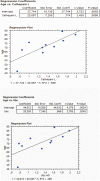Oxidative damage and autophagy in the human trabecular meshwork as related with ageing
- PMID: 24945152
- PMCID: PMC4063984
- DOI: 10.1371/journal.pone.0098106
Oxidative damage and autophagy in the human trabecular meshwork as related with ageing
Abstract
Autophagy is an intracellular lysosomal degradation process induced under stress conditions. Autophagy also plays a major role in ocular patho-physiology. Molecular aging does occur in the trabecular meshwork, the main regulator of aqueous humor outflow, and trabecular meshwork senescence is accompanied by increased oxidative stress. However, the role of autophagy in trabecular meshwork patho-physiology has not yet been examined in vivo in human ocular tissues. The purpose of the herein presented study is to evaluate autophagy occurrence in ex-vivo collected human trabecular meshwork specimens and to evaluate the relationship between autophagy, oxidative stress, and aging in this tissue. Fresh trabecular meshwork specimens were collected from 28 healthy corneal donors devoid of ocular pathologies and oxidative DNA damage, and LC3 and p62 protein expression analyzed. In a subset of 10 subjects, further to trabecular meshwork proteins, the amounts of cathepesin L and ubiquitin was analyzed by antibody microarray in aqueous humor. Obtained results demonstrate that autophagy activation, measured by LC3II/I ratio, is related with. oxidative damage occurrence during aging in human trabecular meshwork. The expression of autophagy marker p62 was lower in subjects older than 60 years as compared to younger subjects. These findings reflect the occurrence of an agedependent increase in the autophagy as occurring in the trabecular meshwork. Furthermore, we showed that aging promotes trabecular-meshwork senescence due to increased oxidative stress paralleled by autophagy increase. Indeed, both oxidative DNA damage and autophagy were more abundant in subjects older than 60 years. These findings shed new light on the role of oxidative damage and autophagy during trabecular-meshwork aging.
Conflict of interest statement
Figures



Similar articles
-
A novel lncRNA enhances autophagy to suppress extracellular matrix via modulating TP53INP1 in human trabecular meshwork cells under oxidative stress.Sci Rep. 2025 Feb 11;15(1):5049. doi: 10.1038/s41598-024-81300-6. Sci Rep. 2025. PMID: 39934637 Free PMC article.
-
Genomic and post-genomic effects of anti-glaucoma drugs preservatives in trabecular meshwork.Mutat Res. 2015 Feb;772:1-9. doi: 10.1016/j.mrfmmm.2014.11.006. Epub 2014 Dec 18. Mutat Res. 2015. PMID: 25772104 Clinical Trial.
-
Mitochondrial damage in the trabecular meshwork occurs only in primary open-angle glaucoma and in pseudoexfoliative glaucoma.PLoS One. 2011 Jan 20;6(1):e14567. doi: 10.1371/journal.pone.0014567. PLoS One. 2011. PMID: 21283745 Free PMC article.
-
The dysfunction of the trabecular meshwork during glaucoma course.J Cell Physiol. 2015 Mar;230(3):510-25. doi: 10.1002/jcp.24826. J Cell Physiol. 2015. PMID: 25216121 Review.
-
From DNA damage to functional changes of the trabecular meshwork in aging and glaucoma.Ageing Res Rev. 2016 Aug;29:26-41. doi: 10.1016/j.arr.2016.05.012. Epub 2016 May 27. Ageing Res Rev. 2016. PMID: 27242026 Review.
Cited by
-
miR-183 Inhibits UV-Induced DNA Damage Repair in Human Trabecular Meshwork Cells by Targeting of KIAA0101.Invest Ophthalmol Vis Sci. 2016 Apr 1;57(4):2178-86. doi: 10.1167/iovs.15-18665. Invest Ophthalmol Vis Sci. 2016. PMID: 27116545 Free PMC article.
-
Aging-enhanced autophagy activity promotes fibrotic progression via the TGF-β2/Smad signaling pathway in trabecular meshwork cells-a new insight from POAG.Front Med (Lausanne). 2025 Jan 15;11:1534120. doi: 10.3389/fmed.2024.1534120. eCollection 2024. Front Med (Lausanne). 2025. PMID: 39882536 Free PMC article.
-
The physiological and pathophysiological roles of the autophagy lysosomal system in the conventional aqueous humor outflow pathway: More than cellular clean up.Prog Retin Eye Res. 2022 Sep;90:101064. doi: 10.1016/j.preteyeres.2022.101064. Epub 2022 Apr 1. Prog Retin Eye Res. 2022. PMID: 35370083 Free PMC article. Review.
-
Enhanced cytomegalovirus infection in human trabecular meshwork cells and its implication in glaucoma pathogenesis.Sci Rep. 2017 Feb 27;7:43349. doi: 10.1038/srep43349. Sci Rep. 2017. PMID: 28240260 Free PMC article.
-
Role of Sphingosine Kinase 1 in Glucolipotoxicity-Induced Early Activation of Autophagy in INS-1 Pancreatic β Cells.Cells. 2024 Apr 5;13(7):636. doi: 10.3390/cells13070636. Cells. 2024. PMID: 38607078 Free PMC article.
References
-
- Cuervo AM, Bergamini E, Brunk UT, Dröge W, French M, et al. (2005) Autophagy and aging: the importance of maintaining “clean” cells. Autophagy 1: 131–140. - PubMed
-
- Mizushima N (2007) Autophagy: process and function. Genes Dev 21: 2861–2873. - PubMed
-
- Tasdemir E, Chiara Maiuri M, Morselli E, Criollo A, D’Amelio M, et al. (2008) A dual role of p53 in the control of autophagy. Autophagy 4: 810–814. - PubMed
-
- Rubinsztein DC, Gestwicki JE, Murphy LO, Klionsky DJ (2007) Potential therapeutic applications of autophagy. Nat Rev Drug Discov 6: 304–312. - PubMed
Publication types
MeSH terms
Substances
Grants and funding
LinkOut - more resources
Full Text Sources
Other Literature Sources
Medical

